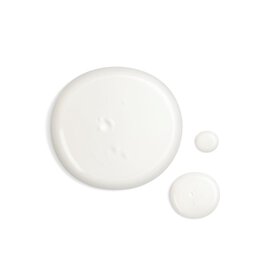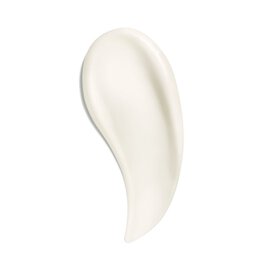THE RIGHT SUNSCREEN FOR YOUR SKIN
When the days get longer again, the sun also gets more power. But its rays not only tan the skin, but also cause sunburn and wrinkles - high time for the right sunscreen! We tell you which sunscreen suits your skin, what ingredients are important and what makes an environmentally friendly sunscreen.
12 Jun 2024
From BIOTHERM
- 01 WHY IS SUNSCREEN SO IMPORTANT?
- 02 WHAT IS IMPORTANT FOR THE APPLICATION?
- 03 DOES THE SKIN TURN BROWN DESPITE SUNSCREEN?
- 04 SPECIAL SKIN NEEDS
- 05 WHICH INGREDIENTS ARE QUESTIONABLE?
- 06 AND WHICH INGREDIENTS ARE RECOMMENDED?
- 07 HOW LONG IS THE SHELF LIFE OF SUNSCREEN?
- 08 CONCLUSION: SUN PROTECTION IS IMPORTANT - AND NOT DIFFICULT AT ALL!
WHY IS SUNSCREEN SO IMPORTANT?
You know that the sun also has its downsides as soon as your skin gets its first sunburn. But why exactly can the sun be so dangerous? And what is the best way to prevent sun damage?
HOW UV RAYS AFFECT YOUR SKIN
No matter whether the sky is cloudy or blue, the invisible UV rays of the sun hit the earth in any weather and can irreversibly damage your skin. Short-wave UVB rays remain mainly in the epidermis, where they stimulate melanin production and tan the skin. However, prolonged exposure to the sun can quickly lead to redness, burns and persistent hyperpigmentation, i.e. pigment spots or age spots.
Long-wave UVA rays, on the other hand, penetrate deep into the subcutaneous tissue. There they cause the formation of free radicals, which damage the skin cells and their DNA. All this happens unnoticed at first, but in the long term it accelerates premature skin aging: The skin is less and less able to retain moisture and appears flabby and thinned out, the connective tissue increasingly loses elasticity and tone, wrinkles become deeper. If the skin's regeneration processes are permanently overtaxed, UV-damaged cells can, in the worst case, mutate into skin cancer at some point.
HOW DOES SUNSCREEN WORK?
Although the skin has its own individual protection, this is quickly exhausted, especially in summer. And this is where sunscreen comes into play: It contains a combination of UVA and UVB filters that act like a protective shield on the skin and extend its individual self-protection time - the higher the sun protection factor (SPF) indicated on the packaging, the longer the protective effect. In addition, most sun protection products contain active ingredients such as vitamins and other antioxidants that additionally strengthen and regenerate the skin.
WHAT IS IMPORTANT FOR USE?
In order for sunscreen to be fully effective, you should consider a few factors before and during application.
HDETERMINE THE LSF
Each skin has an individual self-protection time depending on the skin type. Light skin types usually only have an intrinsic protection time of 10-20 minutes, darker types can usually remain unprotected in the sun for up to 50 minutes. The sun protection factor (e.g. SPF 30 or SPF 50) of a sunscreen now indicates by how much this self-protection can be multiplied without the skin suffering a sunburn. The UV index[1] tells you on which days you should apply sunscreen. If the sun is high in the summer, its rays hit the earth almost perpendicularly, especially at midday, and are correspondingly intense. In winter, on the other hand, the skin in this country usually does not need any additional UV protection.
CHOOSE THE CONSISTENCY OF SUN CARE
From sun oil to sun spray to sun milk - there are many variants besides the classic sun cream. Which consistency is the best? A matter of taste! While sun oil is usually very rich and nourishes dry skin, sun spray and sun milk are lighter, absorb faster and do not leave a sticky film.
USE ENOUGH SUNSCREEN
The tricky thing about applying lotion is: People are usually too sparing. For the face it should be a teaspoonful of sunscreen, for the body up to seven. Only then will the specified SPF be achieved! It is better to let it soak in for a moment and then apply a second layer - this also applies after prolonged sweating or swimming. By the way, sunscreen is always the last layer in your skincare routine: first serum and day cream, then sunscreen. Make-up, on the other hand, is always applied on top of the sunscreen.
CHEMICAL OR MINERAL FILTER?
Basically, there are two types of UV filters. Mineral or physical filters such as zinc oxide and titanium dioxide are applied to the surface of the skin to reflect UV rays. Because they do not penetrate the skin, they are particularly well tolerated, but often leave behind a light-colored haze. Chemical filters, on the other hand, penetrate the skin and convert incoming UV rays into heat. In comparison, chemical sunscreen is less noticeable, but can irritate sensitive skin. In addition, it must be left on for at least half an hour before it provides full UV protection.
DAY CREAM WITH LSF INSTEAD OF SUNSCREEN?
Whether a day cream with a sun protection factor is sufficient depends on the time of year, i.e. the position of the sun, and how long you spend outdoors. In everyday office life and when there is little sun, it is definitely a practical substitute, but in the rarest of cases, one uses as much cream as would be necessary for the specified protection. Nevertheless, a day cream with SPF is still better than no protection at all.
DOES THE SKIN TURN BROWN DESPITE SUNSCREEN?
Absolutely. Strictly speaking, tanning is the skin's natural sun protection: it produces the pigment melanin, which wraps itself around the cell nucleus like a protective coat and makes the skin appear tanned. Since even sunscreens with SPF 50+ still allow a small amount of UV rays to pass through, the body's own melanin production is also stimulated with sunscreen or even in the shade - but more slowly and thus far more gently than by unprotected sizzling in the blazing sun. Do you still want to accelerate your tan? Then self-tanners are a skin-friendly alternative.
SPECIAL SKIN NEEDS
Every skin needs sun protection. It is important that it suits the respective skin and is tailored to its individual needs.
MALLORCA ACNE AND ALLERGIC SKIN
Mallorca acne is an allergic reaction of the skin that occurs especially in spring and early summer. After sun exposure, an itchy rash with redness and acne-like pimples forms on the face, décolleté, arms, legs and shoulders. Since UVA rays are primarily responsible for the onset of Mallorca acne and other sun allergies, the appropriate sunscreen should contain high UVA protection as well as strengthening antioxidants such as alpha-glucosylrutin and lichochalcone A.
WHICH INGREDIENTS ARE OF CONCERN?
Unfortunately, sunscreens not only contain UV filters and skin care substances, but often also ingredients that are questionable, if not harmful, for the skin and the environment. But awareness of well-tolerated and environmentally friendly sun care is now growing - and so is the supply.
MICROPLASTICS IN SUN CREAMS
Through wastewater or swimming in the sea, sun products inevitably end up in the oceans at some point. There, their non-degradable residues, tiny plastic particles, can be deposited and, in the long run, pollute and even irreversibly destroy ecosystems[2]. So when buying sunscreen, make sure that it does not contain any such microplastics. A glance at the list of ingredients is often enough to do this: In most plastic designations are the words 'poly' or 'acryl'[3]. Sustainable packaging that can be recycled and does not end up as plastic waste is also recommended.
UV FILTER: OCTOCRYLENE AND OXYBENZONE
Even UV filters themselves are not always harmless. The widely used UVB filter octocrylene, for example, is not only suspected of causing allergies and having hormonal effects, but is also degraded over time to form carcinogenic benzophenone[4]. In addition, it accumulates in coral tissue, which means that marine organisms can no longer absorb nutrients and eventually die.
The UV filter oxybenzone is similarly harmful to the environment. Even small amounts are enough to damage entire coral reefs to the point that they lose their color. Then the so-called coral bleaching[5] sets in. In some countries, such as Hawaii and Palau, sun creams containing oxybenzone have therefore been completely banned since 2018.
NANOPARTICLES
Although mineral filters are considered to be largely environmentally friendly, they also have their pitfalls. To prevent the minerals they contain from lying on the skin surface as a white film, they have recently often been reduced to nanosize. However, it is unclear to what extent the particles do not pass through the skin's protective barrier in this way and thus enter the body. With intact skin, the risk is low, but especially irritated or minimally injured skin (e.g. after shaving) is more permeable to all kinds of intruders[6] . One solution is therefore to coat nanominerals with a transparent or skin-colored shell so that they cannot penetrate but still remain invisible.
AND WHICH INGREDIENTS ARE RECOMMENDED?
To soothe and moisturize the skin while sunbathing, regenerating active ingredients such as Life Plankton™ or aloe vera are ideal. In addition, antioxidants such as niacinamide and vitamin E also belong in a good sunscreen, you can find them for example in the Waterlover line. They can boost protection by strengthening the skin's protective barrier while neutralizing harmful free radicals.
If you're more prone to an oily sheen and impurities, go for active ingredients like kaolin, silica or perlite.
WHAT IS THE SHELF LIFE OF SUNSCREEN?
It is particularly important for sun products to provide reliable protection. However, as with all cosmetics, their effectiveness can diminish over time.
CAN YOU USE SUNSCREEN FROM THE PREVIOUS YEAR?
It depends: If the packaging is still unopened, you can use it for up to 30 months without hesitation. How many months it can be used after opening is indicated by the jar symbol on the back of each package. However, the following applies here: If the sunscreen has been used frequently and germs have been able to enter, its protective performance is no longer guaranteed - in which case it is better to dispose of it[7].
HOW TO STORE SUNSCREEN CORRECTLY?
Most UV filters react with heat and oxygen, causing them to decompose and their protective effect to fade. Therefore, the tube should not be constantly opened or even left open, and at best stored in the refrigerator or a cool room.
CONCLUSION: SUN PROTECTION IS IMPORTANT - AND NOT DIFFICULT AT ALL!
As you can see, sunscreen is the most important anti-aging agent for the skin. Only those who apply sunscreen regularly can prevent premature signs of aging. It's best to integrate your favorite sunscreen into your morning skincare routine - that way you automatically remember to apply it and are always well-prepared against UV rays. You are unsure what else belongs to an optimal skincare routine? Then let us advise you individually - simply by using the skin diagnosis tool or personal video consultation.
SOURCES
[1] https://www.dwd.de/DE/leistungen/gefahrenindizesuvi/gefahrenindexuvi.html
[2] Microplastics and other plastics in cosmetics. Electronic version. URL: https://www.bund.net/fileadmin/user_upload_bund/publikationen/meere/meere_mikroplastik_in_kosmetika.pdf
[3] Products with hidden microplastics and better alternatives. Electronic version. URL: https://www.smarticular.net/mikroplastik-liste-definition-in-kosmetik-vermeiden-alternativen/
[4] Better not to use old sunscreen. Electronic version. URL: https://www.pharmazeutische-zeitung.de/alte-sonnencreme-besser-nicht-mehr-benutzen-124492/
[5] Toxicopathological Effects of the Sunscreen UV Filter, Oxybenzone (Benzophenone-3), on Coral Planulae and Cultured Primary Cells and Its Environmental Contamination in Hawaii and the U.S. Virgin Islands. Electronic version. URL: https://link.springer.com/article/10.1007/s00244-015-0227-7
[6] Much light, much shadow. Electronic version. URL: https://www.deutsche-apotheker-zeitung.de/daz-az/2017/daz-30-2017/viel-licht-viel-schatten
[7] How long does sunscreen last? Electronic version. URL: https://www.apotheken-umschau.de/mein-koerper/haut-und-haare/wie-lange-haelt-sich-sonnencreme-713655.html









